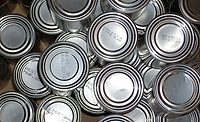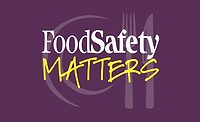A Story on Food Safety Priorities

In many parts of the world, people sometimes have different perceptions of what food safety is. This is even true for healthcare professionals.
I was working as the head of a food safety program in an international organization. In this capacity, one day in the 1990s, I visited a developing country to assess its problems and needs.
In that country, there was a high incidence of foodborne diarrheal diseases, including infant diarrhea. I was looking forward to having a frank discussion with the public health authorities on possible interventions, such as consumer education on food safety or the training of healthcare professionals.
To my surprise, my counterpart, a senior official from the Ministry of Health, told me that one of their urgent food safety problems was the fact that shops were selling expired canned food!
While in a properly regulated food system, it is certainly illegal to sell canned food beyond the declared expiration date, such offenses result in few health consequences, if any.
In the years that followed, I confronted many similar situations. Raising awareness of what food safety is about and its importance has been a tough battle.
What Can We Learn?
The issue of food safety and associated health problems have sometimes been—and still are—subject to different perceptions and interpretations. This is why raising awareness of the importance of food safety has been a long, uphill battle.
It took the bovine spongiform encephalopathy (BSE or mad cow disease) crisis in Europe and an outbreak of Escherichia coli O157 in the United States, where four children died from eating contaminated hamburgers, as well as many other crises, for the world to wake up.[1]
As a result of these crises, risk management and risk assessment processes have been revised. Today, public health priorities are based on objective scientific criteria and measures such as the burden of foodborne disease, appropriate level of protection, and food safety objectives rather than on the personal perception of risk by health professionals.[2]
The nature and prevalence of foodborne diseases vary according to the regions of the world, the degree of urbanization, industrialization, water and sanitation infrastructure, and food hygiene education of the population. In the country mentioned in this article, the urgent food safety problem was foodborne diarrhea caused by a wide range of foodborne pathogens and associated with food preparation at home or in cottage industries. As such, the training of health professionals and/or persons responsible for food handling or care givers should have been the priority measure.[3,4]
References
1. Motarjemi, Y., “Crisis Management,” In Food Safety Management, A Practical Guide for the Food Industry, Eds. Motarjemi, Y. and H. Lelieveld (Cambridge, MA: Academic Press, 2014), 1037–1063.
2. Motarjemi, Y., Y.G. Moy, and E. Todd, eds., “Risk Analysis,” In Encyclopedia of Food Safety (Cambridge, MA: Academic Press, 2014), 59–151.
3. Käferstein, F.K. 2003. “Food Safety: The Fourth Pillar in the Strategy to Prevent Infant Diarrhea.” Bull World Health Organ 81: 842–843
4. Motarjemi, Y., R. Steffen, and H. Binder. 2012 “Preventive Strategy Against Infectious Diarrhea—A Holistic Approach” Gastroenterol 143: 516–519.
Stories like these are designed to convey lessons learned in a scientific, technical, operational, ethical, or management setting. As such, the preparation of a book with the working title Food Safety Stories is underway. Its objective is to capture and share the field experience of practitioners in their respective fields with the aim of making the training of professionals more effective.
We thus are soliciting contributions from you, food safety professionals, about unusual or real-life situations experienced or witnessed by you, with a focus on food safety. If you have an experience worth sharing with colleagues or future generations of food professionals that fits this description, we would be happy to receive and review it for possible inclusion in the book. The story can relate to any step of the food chain or any sector from public health, industry, academia, NGOs, or consumers.
Each contribution will be anonymized to the extent possible and needed. The names of the authors and the number of their contributions will only appear in a list at the beginning of the book. The names of the authors will not be linked to individual stories and there will be no mention of brand or company names. Information regarding dates and geography will be broad to avoid recognizable links with companies, brands, or individuals.
For further information about this project and criteria for content, please contact Peter Overbosch, Yasmine Motarjemi, or Huub Lelieveld, editors of Food Safety Stories.
Looking for a reprint of this article?
From high-res PDFs to custom plaques, order your copy today!






.jpg?height=200&t=1691503719&width=200)
